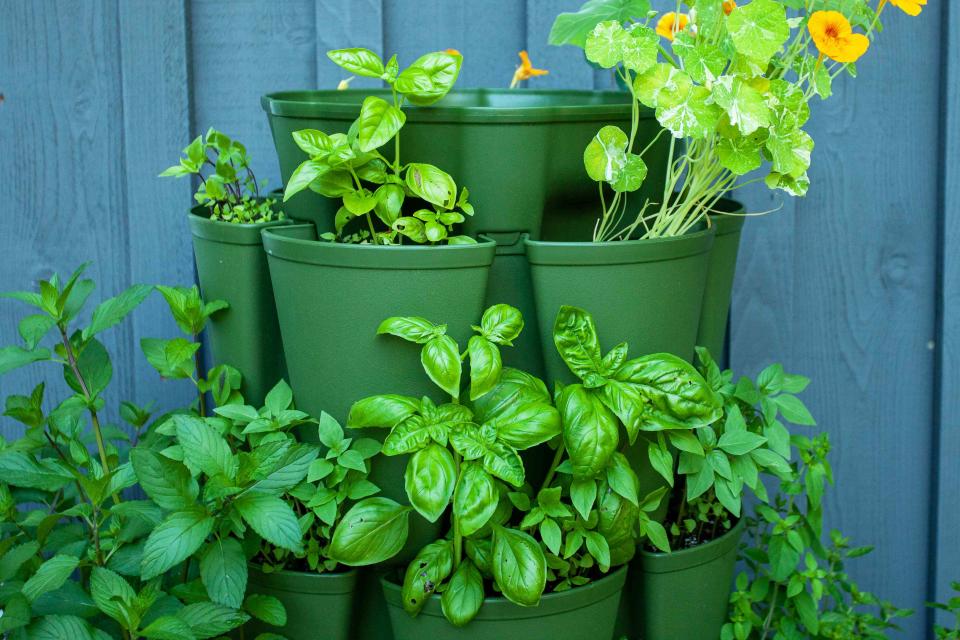4 Herbs You Should Always Plant Side-By-Side
These herb plants will thrive together in your garden.

Ashley-Belle Burns/Getty Images
Using fresh herbs from your garden can enhance any dish (or cocktail) and be much more convenient than running to the store to buy what you need. But if you’re new to growing herbs, you may want to know which ones you can plant next to each other to create a thriving garden that works for you.
“Whenever I grow herbs, I always have food at the front of my mind,” says Stephanie Lucas, Director of Horticulture and Operations for Madison Square Park. “Herbs look pretty, smell great, and have practical uses in the kitchen. I think it's best to find herb combinations that grow great together and can be used together in a meal.”
We asked Lucas for recommendations on what herbs you should always plant side-by-side for ultimate benefits, and got some tips on how to properly care for them, too.
Thyme, Chives, Basil, Parsley, and Oregano
“These plants will thrive in the same conditions and are the perfect seasonings for a wide variety of dishes,” says Lucas. She adds that these are the herbs you want to sprinkle on anything from homemade pizza to any chicken dish.
Mint, Basil, and Cilantro
These three herbs enjoy sun and moist soil, but Lucas warns mint can be a little finicky with other plants. “Mint can be an aggressive grower in the garden,” she says. “But will play nice with other plants when grown in containers.”
Rosemary, Sage, Lavender
All three of these herbs thrive when planted side-by-side, as they grow well in similar dry conditions with full sun. “They can be perennial in some climates, allowing for years of continued enjoyment,” says Lucas. Plus, they all have the added bonus of a potent, pleasant fragrance.
Chamomile, Mint, and Lemon Balm
You have a choice on how to grow these herbs says Lucas. “These plants can be grown in the ground or containers and dried to enjoy year-round,” she explains. “All three produce flowers that are loved by bees and pollinators.”
How to Care for Your Herbs
Lucas says all of these herbs can be grown in pots or the ground, but each has their own specific care requirements to consider in terms of the amount of sunlight needed, types of soil, and whether or not they need fertilizer.
Mint: Mint needs full sun to partial shade and well-draining soil. Lucas adds that “the mint will be more flavorful if the flowers are removed, which keeps the plant growing and vigorous.”
Chamomile: Chamomile will also need full sun to partial shade and well-draining soil to thrive. It doesn't require fertilizer.
Lemon balm: It needs moist, well-draining soil
Chives, parsley, and basil: These herbs benefit from a balanced 10-10-10 fertilizer (equal parts of nitrogen, phosphorus, and potassium) during the growing season, according to Lucas.
Thyme, oregano, cilantro, rosemary, sage, and lavender: All these plants need full sun, well-draining soil, and seldom require fertilizer.
For more Real Simple news, make sure to sign up for our newsletter!
Read the original article on Real Simple.

